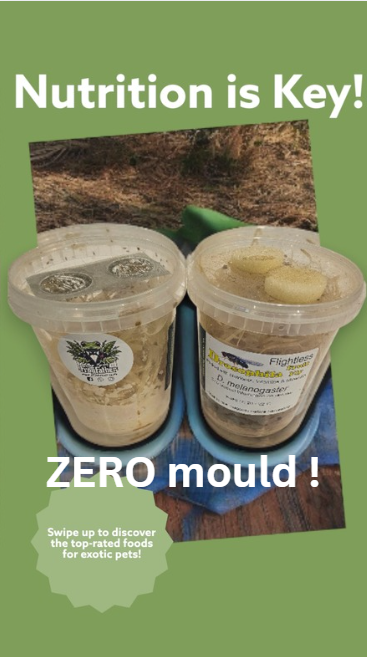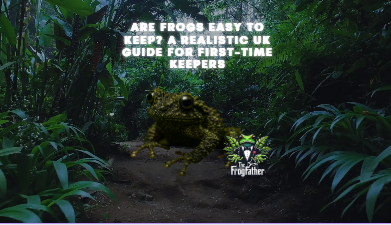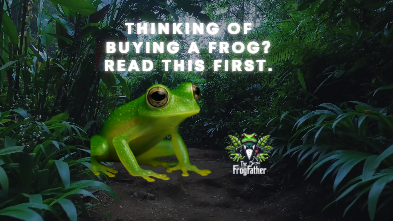If you’ve ever mixed your own fruit fly culture only to find it covered in fuzzy white or green mould a few days later, you’re not alone. Mould growth is one of the most common frustrations for dart frog keepers, especially when preparing homemade media. The good news? It’s completely preventable once you understand what’s happening and how to fix it.
🍌 Why Fruit Fly Cultures Go Mouldy
Fruit fly media is rich in carbohydrates and moisture — basically, it’s a perfect buffet for fungal spores. The same conditions that let your fruit flies thrive also create the ideal environment for mould. All it takes is a few airborne spores, the right humidity, and a little time.
Common causes include:
- Too much moisture or water in the mix
- Warm, stagnant air with no ventilation
- Unsterilised containers or utensils
- Overripe fruit added directly to the mix
- Lack of preservatives or inhibitors in homemade media
In short, mould appears because the media is nutrient-rich but unprotected. That’s where food-grade preservatives like methylparaben come in.
🧪 What Is Methylparaben?
Methylparaben (also known as methyl parahydroxybenzoate) is a food-grade preservative commonly used in cosmetics and food products to prevent mould, yeast, and bacterial growth. In the herp and vivarium hobby, it’s widely used in fruit fly media to stop mould from forming without harming your flies, frogs, or other animals.
It’s odourless, non-toxic at the tiny quantities used, and highly effective even in humid conditions — exactly what your fly cultures need.
🌱 Why Mould Is a Problem
A little surface mould might seem harmless at first, but it can quickly take over your cultures. Mould competes with your flies for nutrients, releasing toxins that slow larval development or kill them outright. Once it sets in, the culture crashes within days — leaving you without food for your frogs or other invertebrates.
Even worse, spores can spread to nearby cultures, ruining batches before they’ve even started. That’s why many breeders swear by a small amount of methylparaben powder in every mix.
🥣 How to Stop Mould in Fruit Fly Cultures
1️⃣ Use the Right Moisture Level
The most common mistake when mixing homemade media is too much water. Your culture should be damp like cake batter — not soup. If you can tilt the cup and it runs, it’s too wet. Excess water increases humidity and encourages fungal growth.
2️⃣ Work Clean
Always wash your hands and use clean tools. If reusing containers, rinse with boiling water or a mild bleach solution, then dry completely before use. Mould spores cling to plastic surfaces and can easily survive between batches.
3️⃣ Keep Airflow Balanced
Fruit flies need air to breathe, but too much ventilation dries the culture out. Use coffee filters, foam plugs, or breathable paper lids to allow gas exchange without exposing the surface to airborne spores.
4️⃣ Avoid Adding Fresh Fruit Directly
Fresh fruit contains its own yeast and mould spores. If you add banana or apple straight into the media, you’re giving contaminants a head start. Instead, mash fruit into your cooked mix while it’s still warm — this helps sterilise it slightly before use.
5️⃣ Add a Mould Inhibitor: Methylparaben
This is the secret weapon used by most professional breeders and suppliers. A pinch of methylparaben powder mixed into your dry ingredients prevents mould and bacterial growth without affecting fly health or reproduction.
How to use it: Add around 1/8 teaspoon per 500 ml of media (or roughly a pinch per culture cup). Thoroughly mix it into the dry ingredients before adding water. Because methylparaben is heat stable, you can also add it before boiling or microwaving the mix.
6️⃣ Use a Ready-Made Anti-Mould Mix
If you don’t have time to make your own, consider using a pre-mixed fruit fly medium that already includes mould inhibitors and balanced nutrients — like Frogfather Fruit Fly Media. It’s designed for long-lasting, reliable production without worrying about contamination or crashes.
7️⃣ Store Cultures Correctly
Keep your cultures at a steady 21–25°C (room temperature). Too warm and they’ll dry out; too cool and moisture condenses, creating surface mould. Avoid placing them near misting systems or vivarium lights.
🧴 How Methylparaben Works
Methylparaben inhibits the enzymes moulds and yeasts use to grow and reproduce. It doesn’t kill existing mould instantly — it simply stops new spores from germinating. This gives your yeast culture (the “good” microbe in the mix) time to colonise the media before the mould gets a foothold.
In short: it tilts the balance in your favour. With methylparaben, your fly culture becomes a safe, stable environment that lasts longer and produces healthier flies.
🧃 How Long Should a Culture Last?
With proper moisture, ventilation, and a bit of methylparaben, a single fruit fly culture should last 3–5 weeks before drying out or becoming exhausted. You’ll notice the surface staying clean and yeasty, not fuzzy or discoloured.
🪰 Quick Troubleshooting
- Fuzzy white mould after 2 days: Too wet or no preservative — start a new culture with methylparaben.
- Green or black mould patches: Contaminated container or old fruit added directly.
- Smells sour or rotten: Overripe fruit or poor airflow — loosen lid slightly.
- Flies dying early: Culture temperature too high or lacking yeast.
✅ Summary: How to Prevent Mould
- 🍌 Keep media moist, not wet
- 🧴 Add a pinch of methylparaben to each batch
- 🌬️ Allow gentle airflow
- 🧽 Clean and sterilise containers between uses
- 🔥 Avoid adding raw fruit after cooking
- 🥣 Or use Frogfather Anti-Mould Fruit Fly Media for a ready-to-go mix
🐸 Final Thoughts
Mould is the number one reason homemade fruit fly cultures fail — but it’s also one of the easiest to prevent. A tiny pinch of methylparaben powder works wonders as a natural, food-grade mould inhibitor, protecting your media without harming your flies or animals.
Next time you mix your own cultures, think of methylparaben as your invisible insurance policy — small dose, big difference. Or, for a hassle-free option, try Frogfather’s ready-made anti-mould fruit fly media for consistent, mould-free results every time.
❓ Frequently Asked Questions
Why does my fruit fly culture go mouldy?
Mould grows when the mix is too wet, warm, or exposed to airborne spores. Homemade fruit fly media is rich in sugars and moisture, which makes it a perfect breeding ground for fungi. Adding a pinch of methylparaben powder helps stop mould from forming naturally, keeping your cultures clean and healthy.
What causes mould in homemade fruit fly media?
Too much moisture, old fruit, poor ventilation, or dirty containers are the main culprits. Mould spores are everywhere — they only grow when the conditions are right. Using a food-grade mould inhibitor like methylparaben or switching to a pre-mixed, anti-mould formula such as Frogfather Fruit Fly Media can completely prevent the problem.
How much methylparaben should I add?
Use around 1/8 teaspoon per 500 ml of media — roughly a small pinch per culture cup. Mix it well into the dry ingredients before adding water. Because methylparaben is heat stable, you can add it before microwaving or cooking your media.
Is methylparaben safe for fruit flies and frogs?
Yes — food-grade methylparaben is completely safe at the small amounts used for mould prevention. It won’t affect breeding, larval growth, or harm amphibians that eat the flies. It’s been used by breeders for years to ensure clean, reliable fly production.
Can I prevent mould without using preservatives?
Good hygiene, proper moisture balance, and airflow help, but preservatives make results far more reliable. You can either add a pinch of methylparaben to homemade media or use Frogfather Anti-Mould Fruit Fly Media — pre-blended with mould inhibitors and nutrients for consistent, long-lasting cultures.
What does mould in a fruit fly culture look like?
Mould appears as white, green, or black fuzzy patches on the surface or along the cup edges. A healthy culture should look slightly yeasty and smell sweet — not musty or sour.
Can I still use a mouldy culture?
It’s best not to. Mould competes with flies for nutrients and releases toxins that can crash your culture. Dispose of mouldy batches and start again using methylparaben or switch to Frogfather Anti-Mould Media to prevent it happening again.
How long should a clean culture last?
With good moisture balance and a mould inhibitor added, a fruit fly culture should last around 3–5 weeks before drying out. The surface should stay smooth and yeasty with no fuzzy patches or discolouration.



